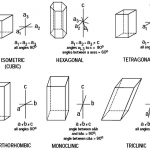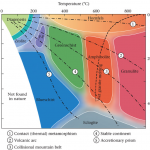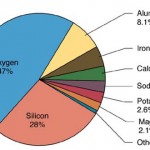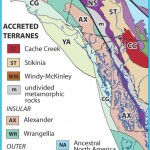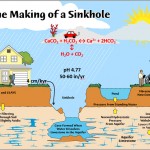The following list contains the websites I visited most often when I studied optical mineralogy; these sites saved my butt on more than one occasion! A lot of the sites overlap in information, but sometimes a particular site had that key picture or explanation that was essential for me in understanding a concept. I've organized the sites into two groups depending on whether they focus on explaining mineralogy properties or identifying specific minerals. (Image from Geoffrey Clarke.)
Understanding Optical Mineralogy Concepts
1) Powell at CUNY has an easy-to-understand online intro course to basic optical mineralogy concepts with short quizzes that let you test your mastery. It's very basic, so start here if you're having trouble understanding how XPL works.
2) Perkin at Nodak offers introductions to basic properties such as relief, along with a listing of various minerals with their thin section pictures and properties. It's very easy to navigate, their identification tips are helpful, and they have plenty of pictures.
3) For a thorough treatment of all things mineralogy, visit Tulane's Nelson's for textbook-like coverage on a multitude of the most important mineralogy topics.
4) Dempster at the University of Glasgow explains basic optical properties in plain English and offers many helpful photographs and tips for identifying specific minerals.
5) Dutch at UWGB has excellent coverage of how optical mineralogy works, including understandable lessons on light, polarization, interference colors, indicatrices, and interference figures. The best part of his lessons are the diagrams. If you navigate into the main area of his mineralogy course page, you can find additional helpful materials on basics like crystal structure.
6) Aley at Marshall offers several short bullet-point notes on mineralogy topics, as well as a few useful pictures of minerals in both PPL and XPL.
Identifying Minerals: Reference Databases
7) Smith College has a long list of minerals with data compiled by students; there aren't as many pictures, but they include a few minerals and properties that other sites might not have. Coverage is very concise and in tabular format.
8) UNC has an image dictionary of various minerals and textures, mainly in XPL. There isn't much other information on the site, but comparing your mineral to the photographs can be very handy.
9) UCLA's database contains an impressive list of minerals. Each mineral features a photograph in XPL and PPL, plus a lengthy list of mineral traits.
10) Rock-forming Minerals in Thin Section print editions are pretty hard to find, but if you know which particular mineral you're looking for, you can search through the limited preview of this Google e-book and get all kinds of information, including things not usually found on websites, such as the 2V angle.
11) HyperPet has a good database featuring a few minerals hard to find elsewhere; their entries contain a photograph, a brief description of the mineral, and a run-down of essential properties.
12) Sidall at University College London covers a wide variety of minerals. The best part of this resource is that each mineral has several photos of each mineral both PPL and XPL, plus a short list of key identification features.
Bonus: Carleton has a listing of several helpful activities, manuals, and other resources.

